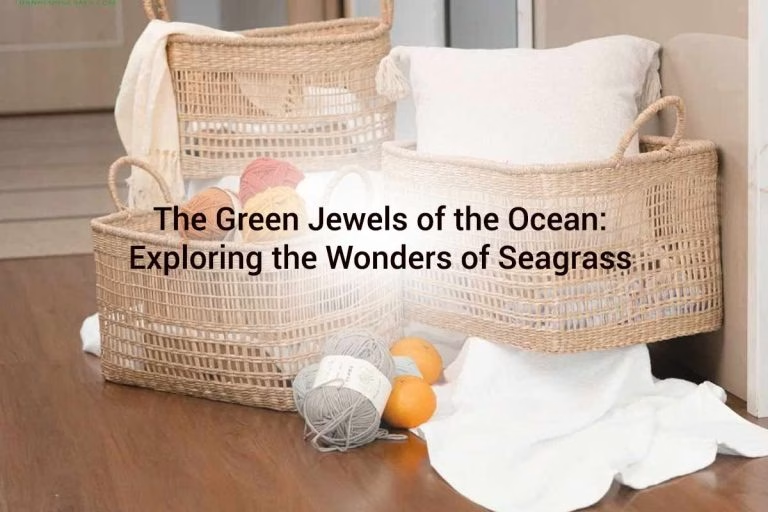Introduction
Beneath the azure waters that surround the Indian subcontinent lies an often overlooked and underestimated ecosystem—seagrass. Though often overshadowed by coral reefs and marine life, seagrasses play a crucial role in maintaining the health of coastal ecosystems. Beyond their ecological importance, seagrasses have been harnessed by communities for various uses, giving rise to a myriad of products and crafts. In this article, we delve into the world of seagrass, exploring its uses, the diverse products and crafts it inspires, and its geographical availability in India.
Ecological Significance
Seagrasses are marine flowering plants that thrive in shallow coastal waters. Found along the coasts of India, these submerged grasses form extensive underwater meadows that provide vital habitat and food for a plethora of marine life. Seagrasses act as a nursery for many fish species, offering protection for juvenile fish and invertebrates. Moreover, they contribute to the overall health of the marine ecosystem by stabilizing sediment, improving water quality, and sequestering carbon.
Uses of Seagrass
- Erosion Control: Seagrasses are renowned for their ability to stabilize coastlines and prevent erosion. The dense root systems of seagrasses trap sediment, reducing the impact of waves and tides, making them invaluable in protecting vulnerable coastal areas.
- Aquaculture and Fisheries: Seagrass beds serve as essential breeding grounds for various commercially important fish species. The health of these underwater meadows directly correlates with the abundance of fish stocks, supporting local fisheries and sustaining livelihoods.
- Biodiversity Hotspots: Seagrass meadows host a rich diversity of marine life, from seahorses and crabs to turtles and dugongs. These areas contribute significantly to the overall biodiversity of coastal ecosystems.
Seagrass Products and Crafts
- Handwoven Seagrass Baskets: Coastal communities, particularly in regions like Kerala, have mastered the art of weaving seagrass into intricate baskets. These baskets are not only functional but also serve as exquisite pieces of traditional craftsmanship.
- Seagrass Furniture: The flexibility and durability of seagrass make it an excellent material for furniture. Chairs, tables, and other items crafted from seagrass are not only aesthetically pleasing but also environmentally friendly.
- Seagrass Matting: Seagrass mats are widely used for flooring and as wall coverings. The natural texture and colors of seagrass add a touch of coastal charm to interiors while promoting sustainable living.
Geographical Availabilities in India
Seagrasses thrive in the coastal regions of India, with significant concentrations found along the eastern and western coasts. Notable areas include the Gulf of Mannar, Palk Bay, Andaman and Nicobar Islands, and the Sundarbans. The diverse seagrass species found in these regions contribute to the ecological health and cultural heritage of coastal communities.
Conclusion
Seagrasses, often overshadowed by more visually striking marine ecosystems, play a vital role in sustaining coastal biodiversity and supporting the livelihoods of communities across India. From erosion control to traditional crafts and furniture, the uses of seagrass are diverse and significant. As we continue to explore and appreciate the wonders of our oceans, it is essential to recognize the importance of seagrasses and work towards their conservation for the benefit of both the environment and the communities that depend on them.

